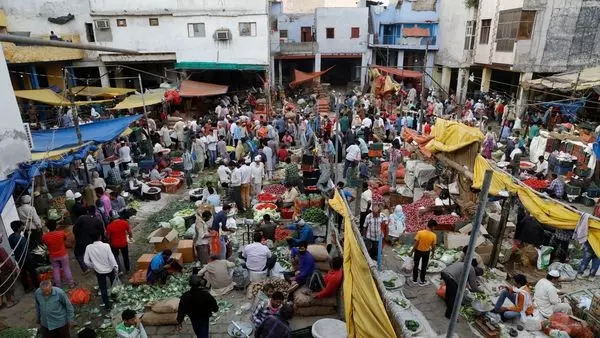
Census likely to start in 2025; no call on caste survey yet: Reports
While the delimitation of Lok Sabha seats is expected in 2028 soon after the census data is published, the Centre is yet to confirm the same

The Centre is likely to start the much-delayed decadal census, a survey of the country’s population, and the work to update the National Population Register (NPR) by early 2025 and declare the data by 2026. The census was delayed by four years due to the COVID-19 pandemic.
The government is also expected to begin the delimitation of Lok Sabha seats after the census and the process will likely wrap up by 2028.
However, no decision has been taken yet on whether caste census will also be carried out along with the general census.
Shift in census cycle
However, the government is yet to make a formal announcement in this regard.
The country's population count has been conducted every 10 years since 1951, but the census work in 2021 could not be carried out due to the COVID-19 pandemic.
“In all probability, the work for the census and the NPR will begin early next year and the population data will be announced by 2026. With this, the census cycle is likely to be changed. So, it will be 2025-2035 and then 2035-2045 and so on in future," sources privy to the thinking of the government told PTI.
Form of 31 questions
The Office of the Registrar General and Census Commissioner had prepared 31 questions to be asked to the citizens during the census exercise.
These questions include whether the head of the household belongs to Scheduled Caste or Scheduled Tribe and other family members as asked in the previous census.
Opposition Congress and the RJD are among the political parties which have been demanding a caste census so that the total OBC population in the country is known.
"The government has not yet taken any decision on caste census," a source said.
Concern over delimitation exercise
While the delimitation exercise is expected soon after the census data is published, the government is yet to confirm the same.
Several political leaders from Southern states have expressed their apprehensions over the possibility of their states losing out on Lok Sabha seats and thereby their political clout as they have been successful in population control, unlike the Northern states.
They feel that the southern states may get fewer number of Parliamentary seats than the existing number of constituencies if the delimitation is carried out with the new data.
What the Constitution says
On the other hand, the Article 82 of the Constitution states: "Provided also that until the relevant figures for the first census taken after the year 2026 have been published, it shall not be necessary to readjust the allocation of seats in the House of the People to the States as readjusted on the basis of the 1971 census".
It means if census is conducted in 2025 and data published in 2026, delimitation exercise cannot be carried out based on 2025 census data. If it happens, then the Article 82 has to be amended.
"All these factors will have to look into before any decision is taken on delimitation," sources told PTI.
About census questionnaire
The 31 questions to be asked to each family under the census exercise include the total number of persons normally residing in the household, whether the head of the household is a woman, the number of dwelling rooms exclusively in possession of the household, the number of married couple(s) living in the household among others.
The questions also include whether a family has telephone, internet connection, mobile or smartphone, bicycle, scooter or motorcycle or moped, and whether they own a car, jeep or a van.
The citizens will also be asked what is the cereal they consume in the household, the main source of drinking water, main source of lighting, access to latrine, type of latrine, waste water outlet, availability of bathing facility, availability of kitchen and LPG/PNG connection, main fuel used for cooking, availability of radio, transistor, television etc.
Findings of last census
The census of India is recorded every decade, with the first one being held in 1872. The first census post-Independence was recorded in 1951 and the last one in 2011.
According to the 2011 data, India's total population was 121 crore, sex ratio was 940 females per 1,000 males, literacy rate was 74.04 per cent and the population growth was 17.64 per cent from 2001 to 2011.
A total of 68.84 per cent of the population lived in rural areas, while 31.16 per cent lived in urban areas and the country then had 28 states and seven union territories with Uttar Pradesh recording the most populous state, with a population of roughly 20 crore.
The least populous Union Territory was Lakshadweep with a population of 64,429. Rajasthan was the largest state geographically, with an area of 342,239 sq km and Goa was the smallest state, with an area of 3,702 sq km.
(With inputs from agencies)

